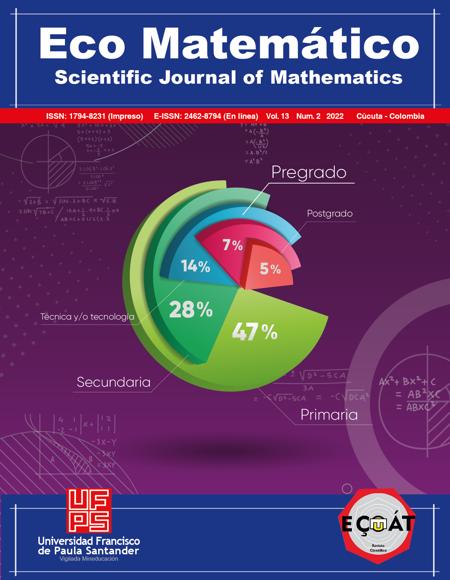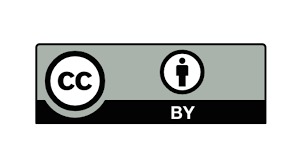Proposal of a sustainable urban drainage system for reduce flood levels in city of Cúcuta, Colombia
Propuesta de un sistema urbano de drenaje sostenible para reducir los niveles de inundación en la ciudad de Cúcuta, Colombia
Main Article Content
Drainage networks may present problems that hinder stormwater management due to climatic phenomena such as rainy and dry seasons. Malfunctioning storm drainage systems can deteriorate road structures and impede the proper mobility of vehicles and pedestrians due to flooding in the sector. The city of Cúcuta has only sanitary sewers, resulting in poor stormwater management. This is related to the fact that, in several sectors of the city, stagnation occurs and the sanitary infrastructure is saturated, becoming a problem at the time of rainfall. In this sense, the objective of this work is to solve the problem of rainwater stagnation at the intersection of Avenida 12E and Calle 2N, Cúcuta, Colombia, through Sustainable Urban Drainage Systems. Therefore, a proposal for stormwater conveyance and infiltration was developed through the application of mathematical equations using the methodology of Sustainable Urban Drainage Systems design using Colombian Resolution 0330 of 2017. In addition, a 3D setting was made to visualize the landscape improvement with the implementation of sustainable drainage. The calculated design flow for the storm drainage was 8.48 m3/s, therefore, it was decided to divide the system into two parts to optimize the design. Based on the design parameters, a system with 9 grates, 2 pipe systems, 7 manholes, and 2 desanders was established. The proposal of Sustainable Urban Drainage Systems in the sector under study is an alternative for sustainable construction, which allows a reduction of negative impacts on the environment and the efficient use of water resources.
Downloads
Article Details
Bonilla, C. A., Ramón, J. D. & Ramón J.A. (2022) Sistemas de drenaje urbano Universidad de Pamplona.
Cacua-Peñaloza I.J. (2017). Recurso instruccional para el desarrollo del contenido de estructuras mediante la aplicación de la realidad aumentada en el área de tecnología. caso: colegio “Pablo Correa León” Cúcuta, Colombia. Eco Matemático, 9(1), 97-121. http://dx.doi.org/10.22463/17948231.1732 DOI: https://doi.org/10.22463/17948231.2489
Chambi, L. Z. (2018). Análisis y diseño de la red de alcantarillado y drenaje pluvial en el distrito de alto selva alegre “el mirador” provincia de Arequipa mediante el programa swmm 5.1 (tesis de pregrado, Universidad Nacional de San Agustín de Arequipa).
Repositorio Institucional UNSA.http://repositorio.unsa.edu.pe/handle/UNSA/6728
Empresas Municipales de Cali. (2017). Norma técnica de recolección de aguas residuales y lluvias, NDI-SE-RA-007/V1.0. EMCALI.
Estupiñán-Roa, N., Solano-Cañas, B. E., & Rodríguez-Ibarra, Z. (2015). Incidencia de un acuerdo en la permanencia estudiantil en la UFPS. (Un análisis con tablas y gráficos estadísticos). Eco Matemático, 6(1), 86–90. https://doi.org/10.22463/17948231.462 DOI: https://doi.org/10.22463/17948231.462
Florez, C. H. (2015). Consultoría para la elaboración de los estudios y diseños de las obras del colector de aguas lluvias de la calle 2N, en la ciudad de San José de Cúcuta (tesis de pregrado, Universidad Francisco de paula Santander).
Hoang, L., & Fenner , R.A. (2016). System interactions of stormwater management using sustainable urban drainage systems and green infrastructure, Urban Water Journal, 13(7), 739-758, https://doi.org/10.1080/1573062X.2015.1036083 DOI: https://doi.org/10.1080/1573062X.2015.1036083
Kusumastuti, D., Jokowinarno, D., Khotimah, S., & dewi, C.(2017). The use of infiltration wells to reduce the impacts of land use changes on flood peaks: An indonesian catchment case study, Pertanika Journal of Science and Technology, 25(2), 407-424.
La Rosa, D., & Pappalardo, D.(2021). Policies and planning of urban green infrastructure and sustainable urban drainage systems, In Urban Services to Ecosystems, 17(1), 297-316. https://doi.org/10.1007/978-3-030-75929-2_16 DOI: https://doi.org/10.1007/978-3-030-75929-2_16
Loc, H.H., Duyen, P. M., Ballatore, T. J., Lan, N. H. & Das-Gupta, A.(2017). Applicability of sustainable urban drainage systems: an evaluation by multi-criteria analysis, Environment Systems and Decisions, 37(3), 332-343. https://doi.org/10.1007/s10669-017-9639-4 DOI: https://doi.org/10.1007/s10669-017-9639-4
Lourenco, I. B., Guimaraes, L. F., Alves, M. B. & Miguez, M. G.(2020) Land as a sustainable resource in city planning: The use of open spaces and drainage systems to structure environmental and urban needs, Journal of Cleaner Production, 276 123096 https://doi.org/10.1016/j.jclepro.2020.123096. DOI: https://doi.org/10.1016/j.jclepro.2020.123096
Luo, H., Oberg, N., Landry, B. J., & García, M. H. (2021). Assessing the system performance of an evolving and integrated urban drainage system to control combined sewer overflows using a multiple-layer based coupled modeling approach. Journal of Hydrology, 603, 127130. https://doi.org/10.1016/j.jhydrol.2021.127130 DOI: https://doi.org/10.1016/j.jhydrol.2021.127130
Maqbool, R., & Wood, H. (2022). Containing a sustainable urbanized environment through SuDS devices in management trains, Science of The Total Environment, 807, 150812. https://doi.org/10.1016/j.scitotenv.2021.150812. DOI: https://doi.org/10.1016/j.scitotenv.2021.150812
McClymont, K., Cunha, D., G., F., Maidment, C., Ashagre, B., Vasconcelos , A., F., Macedo, M., B., & Imani, M.(2020). Towards urban resilience through Sustainable Drainage Systems: A multi-objective optimisation problem. Journal of Environmental Management, 275, 111173. https://doi.org/10.1016/j.jenvman.2020.111173 DOI: https://doi.org/10.1016/j.jenvman.2020.111173
Ministerio de Vivienda, Ciudad y Territorio. (2017, 08 de Junio). Resolución 0330 del 2017. Por la cual se adopta el Reglamento Técnico para el Sector Agua Potable y Saneamiento Básico – RAS y se derogan las resoluciones 1096 de 2000, 0424 de 2001, 0668 de 2003, 1459 de 2005 y 2320 de 2009. https://minvivienda.gov.co/normativa/resolucion-0330-2017-0
Perales, S., Andrés, I., Hernández, C., Vallés, F., Martín, M., Martín, I., Escuder, B., & Andreu, A.(2017). The role of monitoring sustainable drainage systems for promoting transition towards regenerative urban built environments: a case study in the Valencian region, Spain, Journal of Cleaner Production, 163 S113-S124. https://doi.org/10.1016/j.jclepro.2016.05.153. DOI: https://doi.org/10.1016/j.jclepro.2016.05.153
Riyaz, M. (2014). Environmental impact assessment for development of drainage works and storm water infiltration galleries in H. DH. Kulhudhuffushi, Maldives. UNDP.
Rodríguez, L., Zubelzu, S., Perales, S., & Canogar, S. (2018). Techniques and criteria for sustainable urban stormwater management. The case study of Valdebebas (Madrid, Spain). Journal of Cleaner Production, 172, 402-416. https://doi.org/10.1016/j.jclepro.2017.10.070 DOI: https://doi.org/10.1016/j.jclepro.2017.10.070
Tedoldi, D., Chebbo, G., Pierlot , D., Kovacs,Y., & Gromaire, M., C. (2016). Impact of runoff infiltration on contaminant accumulation and transport in the soil/filter media of Sustainable Urban Drainage Systems: A literature review, Science of the Total Environment, 569-570, 904-926. https://doi.org/10.1016/j.scitotenv.2016.04.215. DOI: https://doi.org/10.1016/j.scitotenv.2016.04.215
Woods-Ballard, B., Kellagher, R., Martin, P., Jefferies, C., Bray, R., & Shaffer, P. (2007). The SUDS manual (C697). CIRIA.
Yunianta, A. & Setiadji, B. H. (2018). Sustainable road drainage system: Experimental model, In MATEC Web of Conferences, 181, 11005 http://eprints.undip.ac.id/66026/ DOI: https://doi.org/10.1051/matecconf/201818111005
Yunianta, A., & Setiadji, B. H. e(2019). Design of Sustainable Road Drainage System Model, Journal of Sustainable Engineering: Proceedings Series, 1(1), 35-45. https://doi.org/10.35793/joseps.v1i1.5 DOI: https://doi.org/10.35793/joseps.v1i1.5
Zhou, Q. (2014). A review of sustainable urban drainage systems considering the climate change and urbanization impacts. Water 6(4), 976–992. https://doi.org/10.3390/w6040976 DOI: https://doi.org/10.3390/w6040976







